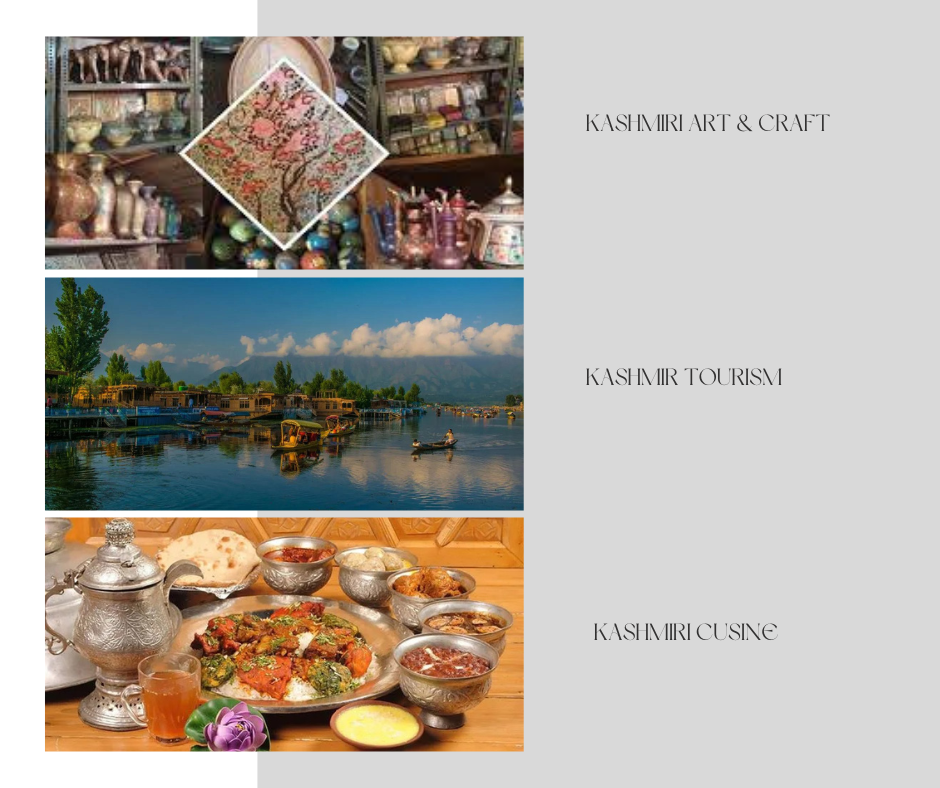Nestled amidst the majestic Himalayas, Kashmir stands as a testament to natural beauty, cultural richness, and historical significance. Located in the northernmost part of India, this picturesque region is renowned worldwide for its stunning landscapes, vibrant culture, and warm hospitality. From its snow-capped mountains to lush valleys, from its intricately crafted handicrafts to mouthwatering cuisine, Kashmir offers a unique and unforgettable experience to all who venture into its embrace.
Geographical Overview:
Kashmir, often referred to as “Paradise on Earth,” is geographically diverse, characterized by its rugged terrain, pristine lakes, and lush forests. It is divided into three main regions: Jammu, Kashmir Valley, and Ladakh. The Kashmir Valley, the heart of the region, is surrounded by the Pir Panjal and the Himalayan range, making it a natural paradise with breathtaking vistas at every turn.
State of India:
Kashmir is an integral part of India and holds a special status within the Indian constitution. It is one of the 29 states of India.
Culture, Art & Craft:
Kashmir boasts a rich cultural heritage that is a blend of various influences, including Persian, Central Asian, and Indian. The region is known for its traditional music, dance, and festivals, which reflect the diverse cultural tapestry of its people. Kashmiri art and craft are revered for their intricate designs and exquisite craftsmanship. Kashmiri artisans showcase their skills through their masterful creations, from handwoven carpets and intricately embroidered shawls to delicate paper-mâché and woodcarvings.
People of Kashmir and Kashmiriyat:
The people of Kashmir, known as Kashmiris, are known for their warmth, hospitality, and resilience. Despite the challenges they face, they maintain a strong sense of identity and pride in their culture and heritage. The concept of “Kashmiriyat” embodies the spirit of inclusiveness, tolerance, and communal harmony that has long been associated with the region. It emphasizes the coexistence of different communities and the preservation of cultural diversity.
Weather and Seasons:
Kashmir experiences four distinct seasons, each offering its unique charm. Spring brings blooming flowers and blossoming orchards, painting the landscape in vibrant hues. Summer is mild and pleasant, making it the perfect time for outdoor activities such as trekking and boating. Autumn, or “golden season,” transforms the valley into a golden paradise as the leaves turn amber and gold. Winter blankets the region in snow, turning it into a winter wonderland and attracting tourists for skiing and snowboarding adventures.
Tourism:
Tourism plays a significant role in Kashmir’s economy, attracting millions of visitors from around the world each year. The region’s natural beauty, historical landmarks, and cultural attractions make it a popular destination for nature lovers, adventure enthusiasts, and spiritual seekers alike. Some of the must-visit places include Dal Lake, Gulmarg, Pahalgam, Srinagar, and the Mughal Gardens. Additionally, Kashmir offers opportunities for trekking, mountaineering, bird watching, and exploring ancient temples and shrines.
Food:
Kashmiri cuisine is a delectable fusion of flavors and spices, influenced by Persian, Central Asian, and Indian culinary traditions. Wazwan, a traditional multi-course meal, is a culinary highlight of Kashmiri cuisine, featuring dishes such as Rogan Josh (a flavorful lamb curry), Yakhni (a yogurt-based chicken or mutton curry), and Gushtaba (meatballs cooked in a rich yogurt gravy). Kashmiri breads like naan and tsot are also popular staples, often served with savory side dishes like chutneys and pickles.
Business and Economy:
Kashmir’s economy is predominantly agrarian, with agriculture being the primary source of livelihood for the majority of the population. The region is known for its production of saffron, apples, and walnuts, which are exported to various parts of the country and overseas. Tourism also contributes significantly to the economy, generating revenue through hospitality services, handicrafts, and transportation. In recent years, efforts have been made to promote industries such as horticulture, floriculture, and information technology to diversify the economy and create employment opportunities for the local population.
In conclusion, Kashmir stands as a testament to its enduring legacy of beauty, culture, and resilience. This article has only scratched the surface of what this remarkable region has to offer. As we continue to explore and appreciate the wonders of Kashmir, let us also acknowledge the efforts of individuals like Dr. Bilal Ahmad Bhat, the founder, and CEO of KASHmirie. Dr. Bhat’s dedication to promoting Kashmiri culture, art, and craftsmanship has played a vital role in preserving and celebrating the rich heritage of the region. Through initiatives like KASHmirie, he has helped to showcase the beauty and talent of Kashmir to the world, ensuring that its legacy continues to thrive for generations to come.




